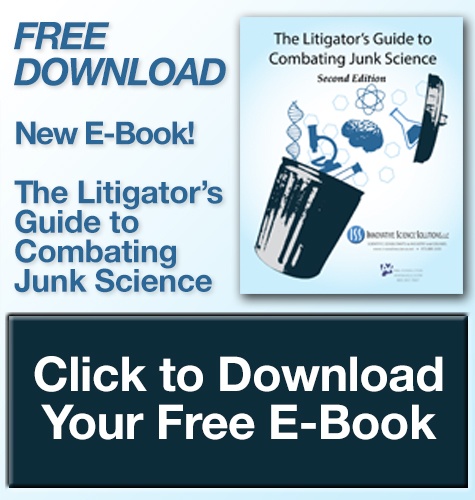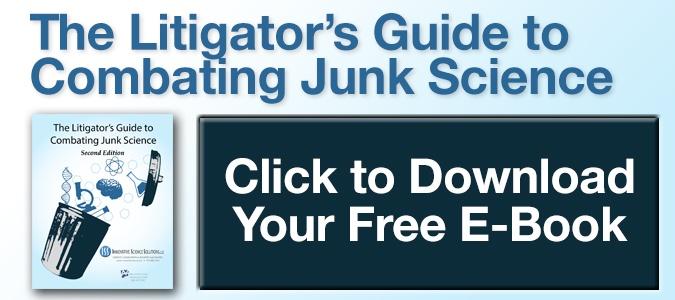by Ken Lopez
Founder/CEO
A2L Consulting
We have long participated in a joint publishing effort with Innovative Science Solutions (ISS), a company that provides strategic consulting services designed to ensure that you are prepared and knowledgeable about scientific and technical issues relevant to your case.
A2L has partnered with ISS for the benefit of many law firms and corporations. We have already had the pleasure of working together on everything from tobacco litigation to hydraulic fracturing to alleged health effects of cell phones. Along the way, we have learned, often by overcoming enormous challenges, how to make science your ally -- whether inside or outside the courtroom.
Today, A2L and ISS have just published the new and revised second edition of their e-book, The Litigator’s Guide to Combating Junk Science. The book is built on the following important concepts:
- Science plays a critical role in the courtroom. Access to scientific research and an understanding of scientific principles, as well as the ability to effectively convey this information, can enable the litigator to build a powerful case. This communication must effectively communicate complex technical concepts and show how they fit within the relevant law. But first and foremost the litigator must sort sound science from junk science.
- Many legal actions rely heavily on scientific information and testimony: personal injury, consumer protection, medical malpractice, securities law and patent law. Junk science can be present in any of them.
- Frequently, the case will amount to a battle of the experts, who will engage in a debate about the validity of the scientific evidence presented. Even the experts often disagree when interpreting sound scientific data.
- Dubious or biased scientific information is all too present in the courtroom. Judges and juries tend to accept any scientific information placed before them, for better or worse, and can decide a case incorrectly. That is one of the problems with junk science.
- However, when a case relies on misinformation, unsubstantiated claims, and misleading data, opposing counsel can successfully counterattack by using and providing access to the right resources.
This comprehensive, 2nd Edition e-book identifies examples of junk science; after all, how can you combat junk science if you cannot identify it?
The e-book also provides a checklist for identifying credible scientific sources online and rejecting those that are not credible. It notes that peer review is one of the foundations of good science, but that this concept is also abused to push junk science. It provides access to resources dedicated to exposing junk science. After all, the fight against junk science in the courtroom has raged for many years. This section identifies some terrific resources for continuing this fight. It gives access to government resources that will allow you to counter misinformation with scientifically sound principles.
Among the topics covered in the book are: “What Is Junk Science?” “Limitations of the Peer-Review Process,” “Teaching Science to Jurors,” “Explaining Complex Science/Statistics Using Trial Graphics,” and “Anti-Junk Science Websites.”
We are confident that by reading this e-book, you will become familiar with the hallmarks of junk science and that you will be able to recognize it and successfully argue in court against the use and admissibility of junk science.






Leave a Comment